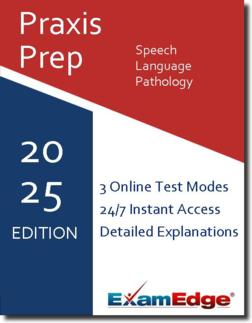Praxis Speech-Language Pathology (5331) Practice Tests & Test Prep by Exam Edge - Blogs
Based on 29 Reviews
- Real Exam Simulation: Timed questions and matching content build comfort for your Praxis Speech-Language Pathology test day.
- Instant, 24/7 Access: Web-based Praxis Speech-Language Pathology practice exams with no software needed.
- Clear Explanations: Step-by-step answers and explanations for your Praxis exam to strengthen understanding.
- Boosted Confidence: Reduces anxiety and improves test-taking skills to ace your Praxis Speech-Language Pathology (5331).

Exam Edge Blogs for Praxis Speech-Language Pathology

SLP Praxis Study Guide: How to Prepare for the Praxis Speech-Language Pathology Test
To become an American Speech-Language-Hearing Association (ASHA) certified speech-language pathologist (SLP), you must first pass the Praxis Speech-La...
Read MoreExam Edge Blogs for Praxis Speech-Language Pathology

SLP Praxis Study Guide: How to Prepare for the Praxis Speech-Language Pathology Test
To become an American Speech-Language-Hearing Association (ASHA) certified speech-language pathologist (SLP), you must first pass the Praxis Speech-La...
Read More

